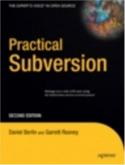
Practical Subversion, Second Edition draws on the experience of its authors, Daniel Berlin and Garrett Rooneyboth Subversion project membersto guide you through a complete introduction to this popular code management solution. And this edition has been updated to reflect the most recent changes to the popular Subversion version control system. After a crash course on Subversions key features, including a theme project that youre encouraged to follow, youll explore best practices, migration tips for moving from other versioning solutions, Subversion integration, and an overview of the Subversion APIs.
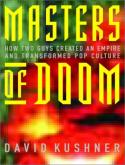 Книга для людей связанных с геймдевом - история о двух монстрах индустрии. Двух Джонах: Кармаке и Ромеро. Взлеты и падения начиная с детства, плавно переходя к первому совместному успешному проекту "Дум". Эпичный разбор полетов. Рекомендуется к ознакомлению.
Книга для людей связанных с геймдевом - история о двух монстрах индустрии. Двух Джонах: Кармаке и Ромеро. Взлеты и падения начиная с детства, плавно переходя к первому совместному успешному проекту "Дум". Эпичный разбор полетов. Рекомендуется к ознакомлению.
Doom, the video game in which you navigate a dungeon in the first person and messily lay waste to everything that crosses your path, represented a milestone in many areas. It was a technical landmark, in that its graphics engine delivered brilliant performance on ordinary PC hardware.
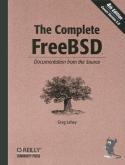 FreeBSD is by far the most popular version of BSD®, the legendary
operating system that has contributed a great deal to every version of
Unix® in use today (including Mac OS® X). Originally a community effort
by the University of California at Berkeley, FreeBSD was aimed at
making Unix a little friendlier and easier to use. By the time other
free operating systems came along, BSD was firmly established and very
reliable. And it continues to be today. For seven years, the FreeBSD
community has relied on Greg Lehey's classic, The Complete FreeBSD,
to guide them through its configuration and administration. The 4th
edition, covering version 5 of FreeBSD, is now available through
O'Reilly Community Press. The Complete FreeBSD is an eminently
practical guidebook that explains not only how to get a computer up and
running with the FreeBSD operating system, but also how to turn it into
a highly functional and secure server that can host large numbers of
users and disks, support remote access, and provide web service, mail
service, and other key parts of the Internet infrastructure. The book
provides in-depth information on installation and updates, back-ups,
printers, RAID, various Internet services, firewalls, the graphical X
Window system, and much more. Author Greg Lehey is a member of the
FreeBSD core team and has been developing, documenting, and advocating
for FreeBSD for nearly ten years. Whether you're an experienced Unix
user or just interested in learning more about this free operating
system and how you can put it to work for you, this do-it-yourself BSD
documentation will provide the information you need. The Complete FreeBSD
is the second release in the O'Reilly Community Press Series. Unlike
classic O'Reilly animal books, which are created to fill an information
void, the Community Press titles provide convenient printed copies of
documentation that is already available online. O'Reilly's role in the
series is limited to providing manufacturing and distribution services
rather than editorial development, so that each Community Press title
reflects the editorial voice and organization of the community that has
created it.
FreeBSD is by far the most popular version of BSD®, the legendary
operating system that has contributed a great deal to every version of
Unix® in use today (including Mac OS® X). Originally a community effort
by the University of California at Berkeley, FreeBSD was aimed at
making Unix a little friendlier and easier to use. By the time other
free operating systems came along, BSD was firmly established and very
reliable. And it continues to be today. For seven years, the FreeBSD
community has relied on Greg Lehey's classic, The Complete FreeBSD,
to guide them through its configuration and administration. The 4th
edition, covering version 5 of FreeBSD, is now available through
O'Reilly Community Press. The Complete FreeBSD is an eminently
practical guidebook that explains not only how to get a computer up and
running with the FreeBSD operating system, but also how to turn it into
a highly functional and secure server that can host large numbers of
users and disks, support remote access, and provide web service, mail
service, and other key parts of the Internet infrastructure. The book
provides in-depth information on installation and updates, back-ups,
printers, RAID, various Internet services, firewalls, the graphical X
Window system, and much more. Author Greg Lehey is a member of the
FreeBSD core team and has been developing, documenting, and advocating
for FreeBSD for nearly ten years. Whether you're an experienced Unix
user or just interested in learning more about this free operating
system and how you can put it to work for you, this do-it-yourself BSD
documentation will provide the information you need. The Complete FreeBSD
is the second release in the O'Reilly Community Press Series. Unlike
classic O'Reilly animal books, which are created to fill an information
void, the Community Press titles provide convenient printed copies of
documentation that is already available online. O'Reilly's role in the
series is limited to providing manufacturing and distribution services
rather than editorial development, so that each Community Press title
reflects the editorial voice and organization of the community that has
created it.
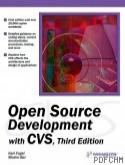 The need for a modern source-code management strategy in the
distributed open-source community is paramount. The benevolent
dictatorship model of open-source maintainers is only quasi-stable, but
it is far better than the other extreme: the chaos of democratic code
development.
The need for a modern source-code management strategy in the
distributed open-source community is paramount. The benevolent
dictatorship model of open-source maintainers is only quasi-stable, but
it is far better than the other extreme: the chaos of democratic code
development.
The best available compromise is the concurrent versioning system (CVS), which introduces proctored code merging into source code management. CVS is ideally suited for worldwide open-source development, and the world is ready for monographs that address the management issues that Per Cederqvist explicitly avoided in his fine 164-page postscript manual distributed with the CVS tar-ball. What is the role of a maintainer/manager in establishing test protocols for code merges? What minimal functional level of developer communications is necessary for merges to remain stable? Is a maintainer-less release possible?
These questions go largely unanswered in Karl Fogel's new Open Source Development with CVS. Fogel's 300-page book consists of chapters alternating between CVS basics and common code maintenance issues. He includes a few anecdotes from open-source lore and lots of nonspecific commonsense guidelines on team software development.
Fogel is at his best when he is engaging us in thinking about what should and should not be under CVS control. He points out that complex relationships exist between developing code and its dependencies on intimately related applications, such as build tools themselves (gcc, autoconf) or partner applications (e.g., the server's client or the client's server). His brief discussion of strategies is too short to be satisfying.
Frustratingly, this book is chock-full of postmodern self-indulgences, such as his boasting reverence for technological ignorance. The discipline needed by good maintainers is missing here; Fogel's informal prose is often grating, and his copious parenthetical remarks are distracting or bullying (they sure are); one wonders where his editor was. Ultimately, his management arguments boil down to an endorsement for the benevolent dictatorship model--a safe conclusion, but one that seems not to use CVS's merging capability for all it's worth. To the question of how to run a project, he responds, "Well, we're all still trying to figure that out, actually." True, and he isn't there yet, but at least he has the questions right. --Peter Leopold --This text refers to an out of print or unavailable edition of this title.The popular first edition was one of the first books available on development and implementation of open source software using CVS. The second edition explains how CVS affects the architecture and design of applications, and has been enhanced with more value-added material covering strategies, third-party tools, scalability, client access limits, and overall server administration for CVS.
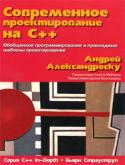 В книге изложена новая технология программирования, представляющая
собой сплав обобщенного программирования, метапрограммирования шаблонов
и объектно- ориентированного программирования на С++. Настраиваемые
компоненты, созданные автором, высоко подняли уровень абстракции,
наделив язык С++ чертами языка спецификации проектирования, сохранив
всю его мощь и выразительность. В книге изложены способы реализации
основных шаблонов проектирования. Разработанные компоненты воплощены в
библиотеке Loki, которую можно загрузить с Web-страницы автора. Книга
предназначена для опытных программистов на С++.
В книге изложена новая технология программирования, представляющая
собой сплав обобщенного программирования, метапрограммирования шаблонов
и объектно- ориентированного программирования на С++. Настраиваемые
компоненты, созданные автором, высоко подняли уровень абстракции,
наделив язык С++ чертами языка спецификации проектирования, сохранив
всю его мощь и выразительность. В книге изложены способы реализации
основных шаблонов проектирования. Разработанные компоненты воплощены в
библиотеке Loki, которую можно загрузить с Web-страницы автора. Книга
предназначена для опытных программистов на С++.
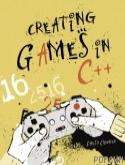 Do you love video games? Ever wondered if you could create one of your
own, with all the bells and whistles? It's not as complicated as you'd
think, and you don't need to be a math whiz or a programming genius to
do it. In fact, everything you need to create your first game,
"Invasion of the Slugwroths," is included in this book and CD-ROM.
Author David Conger starts at square one, introducing the tools of the
trade and all the basic concepts for getting started programming with
C++, the language that powers most current commercial games. Plus, he's
put a wealth of top-notch (and free) tools on the CD-ROM, including the
Dev-C++ compiler, linker, and debugger--and his own LlamaWorks2D game
engine. Step-by-step instructions and ample illustrations take you
through game program structure, integrating sound and music into games,
floating-point math, C++ arrays, and much more. Using the sample
programs and the source code to run them, you can follow along as you
learn. Bio: David Conger has been programming professionally for over
23 years. Along with countless custom business applications, he has
written several PC and online games. Conger also worked on graphics
firmware for military aircraft, and taught computer science at the
university level for four years. Conger has written numerous books on
C, C++, and other computer-related topics. He lives in western
Washington State and has also published a collection of Indian folk
tales.
Do you love video games? Ever wondered if you could create one of your
own, with all the bells and whistles? It's not as complicated as you'd
think, and you don't need to be a math whiz or a programming genius to
do it. In fact, everything you need to create your first game,
"Invasion of the Slugwroths," is included in this book and CD-ROM.
Author David Conger starts at square one, introducing the tools of the
trade and all the basic concepts for getting started programming with
C++, the language that powers most current commercial games. Plus, he's
put a wealth of top-notch (and free) tools on the CD-ROM, including the
Dev-C++ compiler, linker, and debugger--and his own LlamaWorks2D game
engine. Step-by-step instructions and ample illustrations take you
through game program structure, integrating sound and music into games,
floating-point math, C++ arrays, and much more. Using the sample
programs and the source code to run them, you can follow along as you
learn. Bio: David Conger has been programming professionally for over
23 years. Along with countless custom business applications, he has
written several PC and online games. Conger also worked on graphics
firmware for military aircraft, and taught computer science at the
university level for four years. Conger has written numerous books on
C, C++, and other computer-related topics. He lives in western
Washington State and has also published a collection of Indian folk
tales.The first video game I ever played (at age 13) was Pong. It was a very simple ping-pong simulation. During my teenage years, a few, more advanced games appeared on the market. Most notable were the Atari games such as Missile Command, a nuclear warfare simulator. When I was 19, I went to live for a couple of years in Japan. There I discovered a whole new worldseveral, in fact.
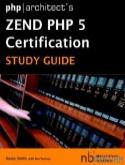 Zend's new PHP 5 Certification Exam represent an excellent tool for
professional PHP developers who want to distinguish themselves in their
field. php|architect's Zend PHP 5 Certification Study Guide, edited and
produced by the publishers of php|architect magazine, provides the most
comprehensive and thorough preparation tool for developers who wish to
take the exam. This book provides complete coverage of every topic that
is part of the exam, including: ? PHP Basics ? Functions ? Arrays ?
Strings and Patterns ? Web Programming ? Object Oriented Programming ?
Database Programming ? Object-oriented Design ? XML and Web Services ?
Security ? Streams and Network Programming ? Differences Between PHP 4
and 5 Written by PHP professionals and Zend Certified PHP 5 Engineers
Davey Shafik and Ben Ramsey, and reviewed by core PHP developer Derick
Rethans, this is the perfect book for every prospective Zend Certified
PHP Engineer candidate!
Zend's new PHP 5 Certification Exam represent an excellent tool for
professional PHP developers who want to distinguish themselves in their
field. php|architect's Zend PHP 5 Certification Study Guide, edited and
produced by the publishers of php|architect magazine, provides the most
comprehensive and thorough preparation tool for developers who wish to
take the exam. This book provides complete coverage of every topic that
is part of the exam, including: ? PHP Basics ? Functions ? Arrays ?
Strings and Patterns ? Web Programming ? Object Oriented Programming ?
Database Programming ? Object-oriented Design ? XML and Web Services ?
Security ? Streams and Network Programming ? Differences Between PHP 4
and 5 Written by PHP professionals and Zend Certified PHP 5 Engineers
Davey Shafik and Ben Ramsey, and reviewed by core PHP developer Derick
Rethans, this is the perfect book for every prospective Zend Certified
PHP Engineer candidate!With PHP breaking new ground in the enterprise arena, the establishment of a ratified certification was, some might say, inevitable. However, for me, it couldn’t come soon enough—and I was ecstatic when Zend launched their PHP 4 Certification. With more than 1,500 certified engineers to date, there is no doubt that their endeavour has been a success.
Now, with the introduction of the long-awaited PHP 5 certification, Zend has once again raised the bar for PHP developers everywhere. This examination is much broader, and requires much more than just theoretical knowledge—in order to pass the test, candidates need real-world knowledge in addition to a solid theoretical background.
The effect of the PHP 5 certification, for me, is even more profound than that of the original certification, and I believe that it will become the gold standard for those looking to hire PHP-centric Web Developers. I think that it is apt to consider Zend’s work a job well done, and to applaud those who invest the time and effort needed to become Zend Certified Engineers.
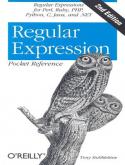 This handy little book offers programmers a complete overview of the
syntax and semantics of regular expressions that are at the heart of
every text-processing application. Ideal as a quick reference, Regular Expression Pocket Reference
covers the regular expression APIs for Perl 5.8, Ruby (including some
upcoming 1.9 features), Java, PHP, .NET and C#, Python, vi, JavaScript,
and the PCRE regular expression libraries.
This handy little book offers programmers a complete overview of the
syntax and semantics of regular expressions that are at the heart of
every text-processing application. Ideal as a quick reference, Regular Expression Pocket Reference
covers the regular expression APIs for Perl 5.8, Ruby (including some
upcoming 1.9 features), Java, PHP, .NET and C#, Python, vi, JavaScript,
and the PCRE regular expression libraries.This concise and easy-to-use reference puts a very powerful tool for manipulating text and data right at your fingertips. Composed of a mixture of symbols and text, regular expressions can be an outlet for creativity, for brilliant programming, and for the elegant solution.
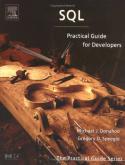 "This book is not just another SQL text. The author's use of simple yet
clear examples to illustrate difficult concepts throughout the text
makes this a perfect book for use in an introductory database systems
class as a supplement or as an introductory reference for the novice
practitioner."
"This book is not just another SQL text. The author's use of simple yet
clear examples to illustrate difficult concepts throughout the text
makes this a perfect book for use in an introductory database systems
class as a supplement or as an introductory reference for the novice
practitioner."- Paul Fortier, University of Massachusetts, Dartmouth
"The book lives up to its title: it is a very practical guide. The authors clearly know their SQL and manage to write about the language in a step-by-step style that progresses smoothly from the simple to the more difficult aspects of the language. The profuse use of examples, each with an accompanying motivation and explanation of the results, lets the reader follow even complex topics without a constant struggle. The authors have even included examples that illustrate common errors programmers make, explaining the right way to perform the task. It doesn't hurt that the sample application is based on something everybody uses every day: food."
- Jim Melton, Oracle Corporation
"This book's authors recognize the vast majority of work done with a database is data retrieval (rather than storage) and have focused on this area."
- Australian Personal Computer, March 2006

- Offers hands-on tips and numerous code examples that show Web developers how to leverage content and feeds from today's top Web sites-including Google, eBay, PayPal, Amazon, Yahoo!, and FedEx
- Introduces APIs (Application Program Interfaces) in general and uses real-world examples that show how to produce and document them
- Explains how to use the popular scripting language PHP to create APIs that interact with unrelated applications over the Web
- Examples take readers through each stage of the API process, from basic test implementations to integration with existing sites
From the Back Cover
As the only book that details how to integrate different APIs and web feeds in PHP so websites can leverage content from eBay, Google, PayPal, Amazon, and FedEx, this hands-on guide takes you step by step through each stage of the API process. Experienced PHP programmer Paul Michael Reinheimer walks you through the production and consumption angles of web feeds and discusses XML-feeds so that you can access one of the fastest growing trends on the web. With real-world examples covering everything from basic test implementations to integration with existing sites, you'll learn how to produce and document your own APIs, which will allow you to expand your sites and may even prompt you to re-examine how you structure your code.
What you will learn from this book
- How to add a third party API to your site or program one of your own
- Ways that a small ISP can use the Yahoo!® XML feed to publish recent technology on a site
- Why APIs are the preferred method for disparate applications to interact over the web
- Differences between the functions of APIs and web feeds and the benefits each has to offer
- The basic structure for REST and SOAP APIs
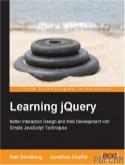 jQuery is a powerful JavaScript library that can enhance your websites
regardless of your background. In this book, creators of the popular
jQuery learning resource, learningquery.com, share their knowledge,
experience, and enthusiasm about jQuery to help you get the most from
the library and to make your web applications shine. For designers,
jQuery leverages existing CSS and HTML skills, allowing you to
dynamically find and change any aspect of a page. This book provides a
gentle introduction to jQuery concepts, allowing you to add
interactions and animations to your pages-even if previous attempts at
writing JavaScript have left you baffled. For programmers, jQuery
offers an open -source, standards-compliant, unobtrusive approach to
writing complex JavaScript applications. This book will guide you past
the pitfalls associated with AJAX, events, effects, and advanced
JavaScript language features, as well as provide you with a reference
to the jQuery library to return to again and again. This book begins
with a tutorial to jQuery, followed by an examination of common,
real-world client-side problems, and solutions for each of them. A
detailed reference rounds off the book, making it an invaluable
resource for answers to all your jQuery questions. Who this book is
written for This book is for web designers who want to create
interactive elements for their designs, and for developers who want to
create the best user interface for their web applications. The reader
will need the basics of HTML and CSS, and should be comfortable with
the syntax of JavaScript. No knowledge of jQuery is assumed, nor is
experience with any other JavaScript libraries required.
jQuery is a powerful JavaScript library that can enhance your websites
regardless of your background. In this book, creators of the popular
jQuery learning resource, learningquery.com, share their knowledge,
experience, and enthusiasm about jQuery to help you get the most from
the library and to make your web applications shine. For designers,
jQuery leverages existing CSS and HTML skills, allowing you to
dynamically find and change any aspect of a page. This book provides a
gentle introduction to jQuery concepts, allowing you to add
interactions and animations to your pages-even if previous attempts at
writing JavaScript have left you baffled. For programmers, jQuery
offers an open -source, standards-compliant, unobtrusive approach to
writing complex JavaScript applications. This book will guide you past
the pitfalls associated with AJAX, events, effects, and advanced
JavaScript language features, as well as provide you with a reference
to the jQuery library to return to again and again. This book begins
with a tutorial to jQuery, followed by an examination of common,
real-world client-side problems, and solutions for each of them. A
detailed reference rounds off the book, making it an invaluable
resource for answers to all your jQuery questions. Who this book is
written for This book is for web designers who want to create
interactive elements for their designs, and for developers who want to
create the best user interface for their web applications. The reader
will need the basics of HTML and CSS, and should be comfortable with
the syntax of JavaScript. No knowledge of jQuery is assumed, nor is
experience with any other JavaScript libraries required.+ В дополнение легкий мануал с перечнем основных функций (250Кб), очень полезный при работе с JQeury.
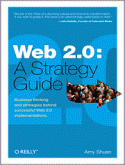
Web 2.0 makes headlines, but how does it make
money? This concise guide explains what's different about Web 2.0 and
how those differences can improve the bottom line. Whether you're an
executive, a small business owner, or an entrepreneur, Web 2.0: A Strategy Guide
illustrates through real life examples how various businesses are
creating new opportunities on today's Web. This book is about strategy
rather than the technology itself.Web 2.0 makes headlines, but how
does it make money? This concise guide explains what's different about
Web 2.0 and how those differences can improve your company's bottom
line. Whether you're an executive plotting the next move, a small
business owner looking to expand, or an entrepreneur planning a
startup, Web 2.0: A Strategy Guide illustrates through real-life examples how businesses, large and small, are creating new opportunities on today's Web.This book is about strategy. Rather than focus on the technology, the
examples concentrate on its effect. You will learn that creating a Web
2.0 business, or integrating Web 2.0 strategies with your existing
business, means creating places online where people like to come
together to share what they think, see, and do. When people come
together over the Web, the result can be much more than the sum of the
parts. The customers themselves help build the site, as old-fashioned
"word of mouth" becomes hypergrowth.
- Flickr, a classic user-driven business, created value for itself by helping users create their own value
- Google made money with a model based on free search, and changed the rules for doing business on the Web-opening opportunities you can take advantage of
- Social network effects can support a business-ever wonder how FaceBook grew so quickly?
- Businesses like Amazon tap into the Web as a source of indirect
revenue, using creative new approaches to monetize the investments
they've made in the Web
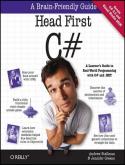 Do you want to learn C#? Programmers around the world have learned that C# lets
them design great-looking programs and build them fast. With C#, you ve got a
powerful programming language and a valuable tool at your fingertips. And with
the Visual Studio IDE, you ll never have to spend hours writing obscure code
just to get a button working. C#, Visual Studio and .NET take care of the
grunt-work, and let you focus on the interesting parts of getting your programs
written. Sound appealing?
Do you want to learn C#? Programmers around the world have learned that C# lets
them design great-looking programs and build them fast. With C#, you ve got a
powerful programming language and a valuable tool at your fingertips. And with
the Visual Studio IDE, you ll never have to spend hours writing obscure code
just to get a button working. C#, Visual Studio and .NET take care of the
grunt-work, and let you focus on the interesting parts of getting your programs
written. Sound appealing?Unlike other C# books, which just show you examples and expect you to just memorize them and move on, Head First C# gets you writing code from the beginning. You're given the tools you need, and then you're guided through fun and engaging programming projects. You'll build programs to play a card game, explore a house, and help lazy programmers manage their sick day excuses. But it's not all fun and games: you'll build business applications too, like a contact database and a program to help a party planner estimate her dinner parties. You'll build a dungeon role-playing game and a fully animated, colorful simulation of a beehive. And by the end of the book, you'll build a fast-paced, full-featured retro Invaders arcade game.
Make no mistake: by the time you're done with Head First C#, you'll be able to build full-scale, complex, and highly visual programs. And you'll have all of the C# tools you need to tackle almost any programming problem that comes your way.
Head First C# is built for your brain, using the revolutionary approach that was pioneered by the highly acclaimed and popular Head First series. You'll never get that bored, "eyes glazed over" feeling from Head First C#, because it guides you through one challenging project after another until, by the end of the book, you're a C# rock star!
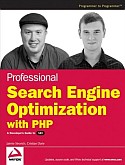 In this book, we have assembled the most important topics that programmers and search engine marketers
In this book, we have assembled the most important topics that programmers and search engine marketersshould know about when designing web sites.
At the end of Chapter 1, You: Programmer and Search Engine Marketer, you create the environment where you’ll be coding away throughout the rest of the book. Programming with PHP can be tricky at times; in order to avoid most configuration and coding errors you may encounter, we will instruct you
how to prepare the working folder and your MySQL database. If you aren’t ready for these tasks yet, don’t worry! You can come back at any time, later. All
programming-related tasks in this book are explained step by step to minimize the chances that anyone gets lost on the way.
Chapter 2, A Primer in Basic SEO, is a primer in search engine optimization tailored for the IT professional. It stresses the points that are particularly relevant to the programmer from the perspective of the programmer. You’ll also learn about a few tools and resources that all search engine marketers and web
developers should know about.
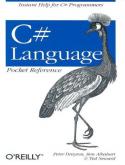 No matter how good your reference books are, you can't always stop to
thumb through hundreds of pages to find the piece of information you
need. Your answer is the C# Language Pocket Reference. Concise and easy to use, this handy pocket guide to C# comes from the authors of C# in a Nutshell, and is a must-have quick reference for anyone implementing this new object-oriented language. The C# Language Pocket Reference
offers the convenience of a quick reference in a format that will
actually fit in your pocket. The book includes a guide to C# language
elements, a brief overview of the Framework Class library, a
cross-reference for namespaces and assemblies, a list of compiler
syntax and switches, a regular expressions reference guide, and more.
No matter how good your reference books are, you can't always stop to
thumb through hundreds of pages to find the piece of information you
need. Your answer is the C# Language Pocket Reference. Concise and easy to use, this handy pocket guide to C# comes from the authors of C# in a Nutshell, and is a must-have quick reference for anyone implementing this new object-oriented language. The C# Language Pocket Reference
offers the convenience of a quick reference in a format that will
actually fit in your pocket. The book includes a guide to C# language
elements, a brief overview of the Framework Class library, a
cross-reference for namespaces and assemblies, a list of compiler
syntax and switches, a regular expressions reference guide, and more.
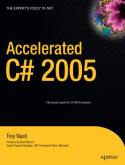
Accelerated C# 2005 teaches you both how to use core C# language concepts and wisely employ C# idioms and object-oriented design patternsto exploit the power of C# and the common language runtime. Youll quickly master C# syntax while learning how the CLR simplifies many programming tasks. Youll also learn best practices that ensure your code will be efficient, reusable, and robust.
This book is the fastest path to C# mastery for anyone familiar with object-oriented programming. Many books introduce C#, but very few also explain how to use it optimally with the .NET CLR. Why spend months or years discovering the best ways to design and code C#, when this book will show you how to do things the right way, right from the start?
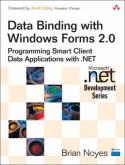 Brian Noyes' writing style easily captures your attention as he
elaborates on all aspects of data binding in his book. He has a
refreshingly clear and crisp delivery as he starts each chapter with a
simple tour of each topic, and then leads you into practical concerns
for sound practices and extensibility opportunities. Most importantly,
as Brian explains approaches to data-binding architecture, patterns of
usage, the value of data sets, binding controls and the rest, he always
describes how he reaches his recommendations on the topic. This book is
perfect for newcomers to .NET 2.0, but also for those that have some
experience. Anyone who cares about data in their applications (okay,
that should be almost everyone) is guaranteed to learn something new
and useful by reading Brian's book." --Michele Leroux Bustamante,
IDesign chief architect, Microsoft regional director, and MVP"Brian has
saved me a lot of time. I'm writing The Hitchhiker's Guide to Visual
Studio and SQL Server 2005 (7th Edition) and I'm not going to have to
cover data binding nearly as deeply because Brian has done it for me.
His book gets right to the meat of the subject and makes data binding
look easy.I was also pleased to see that the book focuses on the
misunderstood and under-applied Windows Forms architecture. It's a
must-read for anyone trying to make their application more interactive
and to leverage the new Visual Studio 2005 technology. I'm planning to
point my readers to this resource when they need an in-depth treatment
of data binding." --William Vaughn, president, Beta V Corporation"Data
binding has finally come of age in Windows applications. Back in the
Visual Studio 6.0 days, I ignored data binding completely and wrote my
own repetitive code to encapsulate my business logic. With Visual
Studio 2005, we finally have a robust and compelling data-binding
technology. To ignore it today would make you inefficient and put you
behind the curve. Brian delivers a clear and concise discussion of a
core topic of development for Windows today. A combination of an
easy-to-follow conversational yet technical tone, excellent examples,
and solid explanations make this a must-read for any developer writing
for Windows or learning to write for Windows."
Brian Noyes' writing style easily captures your attention as he
elaborates on all aspects of data binding in his book. He has a
refreshingly clear and crisp delivery as he starts each chapter with a
simple tour of each topic, and then leads you into practical concerns
for sound practices and extensibility opportunities. Most importantly,
as Brian explains approaches to data-binding architecture, patterns of
usage, the value of data sets, binding controls and the rest, he always
describes how he reaches his recommendations on the topic. This book is
perfect for newcomers to .NET 2.0, but also for those that have some
experience. Anyone who cares about data in their applications (okay,
that should be almost everyone) is guaranteed to learn something new
and useful by reading Brian's book." --Michele Leroux Bustamante,
IDesign chief architect, Microsoft regional director, and MVP"Brian has
saved me a lot of time. I'm writing The Hitchhiker's Guide to Visual
Studio and SQL Server 2005 (7th Edition) and I'm not going to have to
cover data binding nearly as deeply because Brian has done it for me.
His book gets right to the meat of the subject and makes data binding
look easy.I was also pleased to see that the book focuses on the
misunderstood and under-applied Windows Forms architecture. It's a
must-read for anyone trying to make their application more interactive
and to leverage the new Visual Studio 2005 technology. I'm planning to
point my readers to this resource when they need an in-depth treatment
of data binding." --William Vaughn, president, Beta V Corporation"Data
binding has finally come of age in Windows applications. Back in the
Visual Studio 6.0 days, I ignored data binding completely and wrote my
own repetitive code to encapsulate my business logic. With Visual
Studio 2005, we finally have a robust and compelling data-binding
technology. To ignore it today would make you inefficient and put you
behind the curve. Brian delivers a clear and concise discussion of a
core topic of development for Windows today. A combination of an
easy-to-follow conversational yet technical tone, excellent examples,
and solid explanations make this a must-read for any developer writing
for Windows or learning to write for Windows."
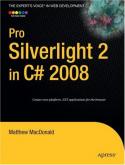
Silverlight is a lightweight browser plug–in that frees your code from the traditional confines of the browser. It’s a rules–changing, groundbreaking technology that allows you to run rich client applications right inside the browser. Even more impressively, it’s able to host true .NET applications in non–Microsoft browsers (like Firefox) and on non–Microsoft platforms (like Mac OS X). Silverlight is still new and evolving fast, and you need a reliable guidebook to make sense of it.
With four–color graphics and screenshots throughout, Pro Silverlight 2 in C# 2008 is the perfect reference: you’ll learn about the features that put Silverlight in direct competition with Adobe Flash, such as rich support for 2D drawing, animations, and media playback, and best of all, you’ll experience the plumbing of .NET and the design model of WPF through Silverlight—all of the same .NET technology that developers use to design next–generation Windows applications. Author Matthew MacDonald provides an expertly crafted tutorial written from professional developer to professional developer. You’ll learn to create rich media applications using Silverlight in the environment you’re most productive in–no matter what the target platform.
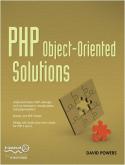 With the surge of popularity of PHP 5, and with PHP 6 just around the corner,
Object-Oriented Programming is now an important consideration for PHP
developers. This version-neutral book is a gentle introduction to
Object-Oriented Programming (OOP) that wont overburden you with complex theory.
It teaches you the essential basics of OOP that youll need to know before moving
onto a more advanced level, and includes a series of pre-packaged scripts that
you can incorporate into your existing sites with the minimum of effort. It
shows how OOP can be used to create reusable and portable code by walking you
through a series of simple projects. The projects feature the sorts of things
developers run up against every day, and include a validator for filtering user
input, a simple Date class that avoids the need to remember all the esoteric
format codes in PHP, and an XML generator.
With the surge of popularity of PHP 5, and with PHP 6 just around the corner,
Object-Oriented Programming is now an important consideration for PHP
developers. This version-neutral book is a gentle introduction to
Object-Oriented Programming (OOP) that wont overburden you with complex theory.
It teaches you the essential basics of OOP that youll need to know before moving
onto a more advanced level, and includes a series of pre-packaged scripts that
you can incorporate into your existing sites with the minimum of effort. It
shows how OOP can be used to create reusable and portable code by walking you
through a series of simple projects. The projects feature the sorts of things
developers run up against every day, and include a validator for filtering user
input, a simple Date class that avoids the need to remember all the esoteric
format codes in PHP, and an XML generator.
- Teaches the fundamentals of OOP
- Simple projects show how OOP concepts work in the real world
- Pre-packaged scripts can easily be added to your own projects
What youll learn
- PHP features, such as the Standard PHP Library (SPL), that are poorly documented or ignored by existing books
- How to develop classes of their own
- OOP in easy-to-understand language without getting bogged down in dense theory
- Solid foundations for developers wishing to delve more deeply into OOP
- How to leverage the strengths of OOP as a means for creating reusable code that can be used successfully within a procedural context
- How to code for both PHP 5 and 6
Who is this book for?
This book is aimed at intermediate-level PHP developers who want to take their skills to the next level by exploring object-oriented programming as a way of creating reusable code for a everyday website tasks. A typical reader would be someone who has read one of the authors previous title, such as PHP Solutions, or one of the PHP books for Dreamweaverand feels ready to tackle something a little more challenging.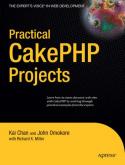
If you’ve been using PHP for sometime now and would like to start using a web framework, you’ll want to try CakePHP, which is an open source rapid development web framework built on PHP.
PHP experts Kai Chan and John Omokore guide you through a variety of practical CakePHP applications. You will work on projects such as a video gallery, unit testing application, an e–commerce app, a blog site, and much more. Practical CakePHP Projects covers the key architectural concepts as well as including mini projects that you can use to enhance your own applications.
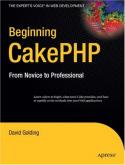
CakePHP is a leading PHP–based web app development framework. When asking a question on forums or chat rooms, many CakePHP beginners get little help from the experts. Simple questions can get a response like, “Well, just read the online manual and API.” Unfortunately, the online manual is depreciated, and who wants to absorb a programming language or framework from an API? Beginning CakePHP will do the following:
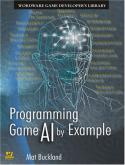 Programming Game AI by Example provides a comprehensive and practical
introduction to the "bread and butter" AI techniques used by the game
development industry, leading the reader through the process of designing,
programming, and implementing intelligent agents for action games using the C++
programming language.
Programming Game AI by Example provides a comprehensive and practical
introduction to the "bread and butter" AI techniques used by the game
development industry, leading the reader through the process of designing,
programming, and implementing intelligent agents for action games using the C++
programming language.
Techniques covered include state- and goal-based behavior, inter-agent communication, individual and group steering behaviors, team AI, graph theory, search, path planning and optimization, triggers, scripting, scripted finite state machines, perceptual modeling, goal evaluation, goal arbitration, and fuzzy logic.
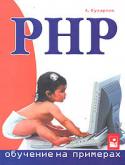 Просто и доступно изложены основы РНР - популярного языка написания скриптов для Web-страниц. Выполняя несложные примеры, читатель сможет освоить азы программирования на РНР, создать динамическую страницу, счетчик посещения сайта, систему голосования, адресную книгу, Интернет-магазин. Описаны типичные ошибки использования сценариев, а также пути их исправления. Книга содержит фрагменты кода, который можно применять при создании собственных проектов. Предназначена прежде всего для начинающих, но может быть полезна и опытным программистам, использующим РНР.
Просто и доступно изложены основы РНР - популярного языка написания скриптов для Web-страниц. Выполняя несложные примеры, читатель сможет освоить азы программирования на РНР, создать динамическую страницу, счетчик посещения сайта, систему голосования, адресную книгу, Интернет-магазин. Описаны типичные ошибки использования сценариев, а также пути их исправления. Книга содержит фрагменты кода, который можно применять при создании собственных проектов. Предназначена прежде всего для начинающих, но может быть полезна и опытным программистам, использующим РНР.
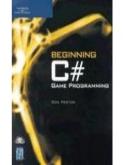 Are you ready to try your hand at programming games using C#? "Beginning C# Game
Programming" is your ideal introductory guide—designed to jumpstart your
experience with C# and DirectX 9. It includes the fundamental topics you’ll need
to know and covers additional topics that you’ll find helpful along the way.
Begin with a comprehensive look at programming with C#—from the basics of
classes to advanced topics such as polymorphism and abstraction. Then it’s on to
DirectX 9 as you learn how to create a basic framework and a Direct3D device.
You’ll also cover DirectSound and DirectInput. Put your newfound knowledge to
the test as you program a complete game!
Are you ready to try your hand at programming games using C#? "Beginning C# Game
Programming" is your ideal introductory guide—designed to jumpstart your
experience with C# and DirectX 9. It includes the fundamental topics you’ll need
to know and covers additional topics that you’ll find helpful along the way.
Begin with a comprehensive look at programming with C#—from the basics of
classes to advanced topics such as polymorphism and abstraction. Then it’s on to
DirectX 9 as you learn how to create a basic framework and a Direct3D device.
You’ll also cover DirectSound and DirectInput. Put your newfound knowledge to
the test as you program a complete game!Provides true beginners with the programming skills they need to create games using C#.
Shows readers how to combine C# with DirectX 9.
Covers comprehensive game development topics, including sound and graphics.
Comes complete with Q&As, extensive end-of-chapter exercises, and a CD to reinforce self-practice and learning.
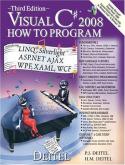
Created by world-renowned programming instructors Paul and Harvey Deitel, “Visual C# 2005 How to Program, Third Edition” introduces all facets of the C# 2005 language through the Deitels' signature "Live Code™ Approach", that features hundreds of working programs. This book has been thoroughly updated to reflect the major innovations Microsoft has incorporated in Visual C# 2005 and .NET; The many new platform features covered include: LINQ (Language Integrated Query), Windows Presentation Foundation (WPF), ASP.NET Ajax and the Microsoft Ajax Library, Silverlight-based rich Internet application development, and creating Web services with Windows Communication Foundation (WCF). New language features introduced in this edition: automatic properties, object initializers, partial classes and methods, anonymous methods, Lambda expressions, extension methods, anonymous types, and collection initializers. Extensively updated coverage of delegates.and more sophisticated techniques, including searching, sorting, data structures, generics, and collections. Appendices provide essential programming reference material on topics ranging from number systems to the Visual Studio Debugger, UML 2 to Unicode and ASCII. Appropriate for all basic-to-intermediate level Visual C# 2008 programmers.
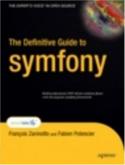 Developing a new web application should not mean reinventing the wheel. That's
why a framework is an essential item in your development toolbox. It helps you
respect coding standards; write bulletproof, maintainable code; and focus on
business rules rather than waste time on repetitive tasks. This book introduces
you to symfony, the leading framework for PHP developers, showing you how to
wield its many features to develop web applications faster and more efficiently,
even if you only know a bit of PHP.
Developing a new web application should not mean reinventing the wheel. That's
why a framework is an essential item in your development toolbox. It helps you
respect coding standards; write bulletproof, maintainable code; and focus on
business rules rather than waste time on repetitive tasks. This book introduces
you to symfony, the leading framework for PHP developers, showing you how to
wield its many features to develop web applications faster and more efficiently,
even if you only know a bit of PHP.
In The Definitive Guide to symfony, you will learn about the Model-View-Controller architecture and the crucial role it plays in making frameworks like symfony possible. The book also covers framework installation and configuration, and shows you how to build pages, deal with templates, manage requests and sessions, and communicate with databases and servers. You will see how symfony can make your life easier by effectively managing form data, enhancing the user experience with Ajax, internationalizing applications for a global audience, and using smart URLs. Authors François Zaninotto and Fabien Potencier put a strong emphasis on the tools that symfony provides for professional environments, showing you how to take advantage of unit tests, scaffolding, plug-ins, the command line, and extensible configuration. And since frameworks often raise performance-related debate, this book will give you many tips and techniques for monitoring and improving your application's performance, from caching to expert configuration tweaks.
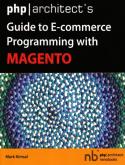 This highly anticipated book will give you the insight you need to successfully
manage and customize your Magento Commerce installation. php|architect's Guide
to Programming with Magento takes you from installation to deployment of this
popular e-commerce open source software. Magentos flexibility and Zend
Framework-based structure have made it an increasingly popular e-commerce
solution. Designed as a valuable companion to the the documentation provided on
the Magento web site, this comprehensive book covers everything you as a
developer need to know, including: - Installation and configuration - Basic
understanding of Magento Commerce features and functions - Overview of front-end
and back-end systems - Dealing with multiple stores - Accommodating multiple
languages & internationalization issues - Handling Magento modules - Working
with the Magento template system - Understanding Magento's EAV database
structure - Made-to-order products - Adding a rewards or points system -
Integration with a CMS - Accounting, inventory and order fulfillment and
exporting information with XML - An entire chapter devoted to quick answers to
common questions.
This highly anticipated book will give you the insight you need to successfully
manage and customize your Magento Commerce installation. php|architect's Guide
to Programming with Magento takes you from installation to deployment of this
popular e-commerce open source software. Magentos flexibility and Zend
Framework-based structure have made it an increasingly popular e-commerce
solution. Designed as a valuable companion to the the documentation provided on
the Magento web site, this comprehensive book covers everything you as a
developer need to know, including: - Installation and configuration - Basic
understanding of Magento Commerce features and functions - Overview of front-end
and back-end systems - Dealing with multiple stores - Accommodating multiple
languages & internationalization issues - Handling Magento modules - Working
with the Magento template system - Understanding Magento's EAV database
structure - Made-to-order products - Adding a rewards or points system -
Integration with a CMS - Accounting, inventory and order fulfillment and
exporting information with XML - An entire chapter devoted to quick answers to
common questions.
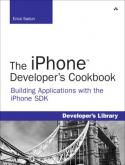 "This book would be a bargain at ten times its price! If you are
writing iPhone software, it will save you weeks of development time.
Erica has included dozens of crisp and clear examples illustrating
essential iPhone development techniques and many others that show
special effects going way beyond Apple's official documentation." --
Tim Burks, iPhone software developer, TootSweet Software "Erica Sadun's
technical expertise lives up to the Addison-Wesley name. The iPhone
Developer's Cookbook is a comprehensive walkthrough of iPhone
development that will help anyone out, from beginners to more
experienced developers. Code samples and screenshots help punctuate the
numerous tips and tricks in this book. " -- Jacqui Cheng, Associate
Editor, Ars Technica "We make our living writing this stuff and yet I
am humbled by Erica's command of her subject matter and the way she
presents the material: pleasantly informal, then very appropriately
detailed technically. This is a going to be the Petzold Book for iPhone
developers." -- Daniel Pasco, lead developer and CEO Black Pixel
Luminance "The iPhone Developer's Cookbook: Building Mobile
Applications with the iPhone SDK should be the first resource for the
beginning iPhone programmer, and is the best supplemental material to
Apple's own documentation." -- Alex C. Schaefer, lead programmer
ApolloIM, iPhone Application Development Specialist for MeLLmo, Inc
"Erica's book is a truly great resource for Cocoa Touch developers.
This book goes far beyond the documentation on Apple's website, and she
includes methods that give the developer a deeper understanding of the
iPhone OS, by letting them glimpse what's going on behind the scenes on
this incredible mobile platform." -- John Zorko, Sr. Software Engineer,
mobile devices
"This book would be a bargain at ten times its price! If you are
writing iPhone software, it will save you weeks of development time.
Erica has included dozens of crisp and clear examples illustrating
essential iPhone development techniques and many others that show
special effects going way beyond Apple's official documentation." --
Tim Burks, iPhone software developer, TootSweet Software "Erica Sadun's
technical expertise lives up to the Addison-Wesley name. The iPhone
Developer's Cookbook is a comprehensive walkthrough of iPhone
development that will help anyone out, from beginners to more
experienced developers. Code samples and screenshots help punctuate the
numerous tips and tricks in this book. " -- Jacqui Cheng, Associate
Editor, Ars Technica "We make our living writing this stuff and yet I
am humbled by Erica's command of her subject matter and the way she
presents the material: pleasantly informal, then very appropriately
detailed technically. This is a going to be the Petzold Book for iPhone
developers." -- Daniel Pasco, lead developer and CEO Black Pixel
Luminance "The iPhone Developer's Cookbook: Building Mobile
Applications with the iPhone SDK should be the first resource for the
beginning iPhone programmer, and is the best supplemental material to
Apple's own documentation." -- Alex C. Schaefer, lead programmer
ApolloIM, iPhone Application Development Specialist for MeLLmo, Inc
"Erica's book is a truly great resource for Cocoa Touch developers.
This book goes far beyond the documentation on Apple's website, and she
includes methods that give the developer a deeper understanding of the
iPhone OS, by letting them glimpse what's going on behind the scenes on
this incredible mobile platform." -- John Zorko, Sr. Software Engineer,
mobile devices
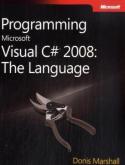 Get the in-depth reference and pragmatic, real-world insights you need
to exploit the enhanced language features and core capabilities in
Visual C# 2008. Programming expert Donis Marshall deftly helps you
build your proficiency with language features such as classes, structs,
and other fundamentals, and helps you advance your expertise with
more-advanced topics such as debugging, threading, and memory
management. Combining an incisive reference with code samples and best
practices, this developer reference focuses on details of the C#
language you need to build innovative solutions.
Get the in-depth reference and pragmatic, real-world insights you need
to exploit the enhanced language features and core capabilities in
Visual C# 2008. Programming expert Donis Marshall deftly helps you
build your proficiency with language features such as classes, structs,
and other fundamentals, and helps you advance your expertise with
more-advanced topics such as debugging, threading, and memory
management. Combining an incisive reference with code samples and best
practices, this developer reference focuses on details of the C#
language you need to build innovative solutions.Delves
into the core, must-know topics for developers working with Visual C#
2008, and advances their mastery with essential skills.
Thoroughly
explicates language features such as generics, code snippets, and
anonymous methods, while also providing updated information about
classic features such as namespaces and metadata.
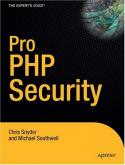
Pro PHP Security is one of the first books devoted solely to PHP security. It will serve as your complete guide for taking defensive and proactive security measures within your PHP applications. (And the methods discussed are compatible with PHP versions 3, 4, and 5.)
The knowledge you'll gain from this comprehensive guide will help you prevent attackers from potentially disrupting site operation or destroying data. And you'll learn about various security measures, for example, creating and deploying "captchas," validating e-mail, fending off SQL injection attacks, and preventing cross-site scripting attempts.
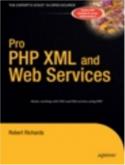
Pro PHP XML and Web Services is the authoritative guide to using the XML features of PHP 5 and PHP 6. No other book covers XML and Web Services in PHP as deeply as this title. The first four chapters introduce the core concepts of XML required for proficiency, and will bring you up to speed on the terminology and key concepts you need to proceed with the rest of the book. Next, the book explores utilizing XML and Web Services with PHP5. Topics include DOM, SimpleXML, SAX, xmlReader, XSLT, RDF, RSS, WDDX, XML-RPC, REST, SOAP, and UDDI.
Author Robert Richards, a major contributor to the PHP XML codebase, is a leading expert in the PHP community. In this book, Richards covers all topics in depth, blending theory with practical examples. Youll find case studies for the most popular web services like Amazon, Google, eBay, and Yahoo. The book also covers XML capabilities, demonstrated through informative examples, in the PEAR libraries.
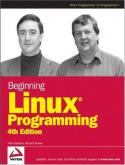 Beginning Linux Programming, Fourth Edition continues its unique
approach to teaching UNIX programming in a simple and structured way on
the Linux platform. Through the use of detailed and realistic examples,
students learn by doing, and are able to move from being a Linux
beginner to creating custom applications in Linux. The book introduces
fundamental concepts beginning with the basics of writing Unix programs
in C, and including material on basic system calls, file I/O,
interprocess communication (for getting programs to work together), and
shell programming. Parallel to this, the book introduces the toolkits
and libraries for working with user interfaces, from simpler terminal
mode applications to X and GTK+ for graphical user interfaces. Advanced
topics are covered in detail such as processes, pipes, semaphores,
socket programming, using MySQL, writing applications for the GNOME or
the KDE desktop, writing device drivers, POSIX Threads, and kernel
programming for the latest Linux Kernel.
Beginning Linux Programming, Fourth Edition continues its unique
approach to teaching UNIX programming in a simple and structured way on
the Linux platform. Through the use of detailed and realistic examples,
students learn by doing, and are able to move from being a Linux
beginner to creating custom applications in Linux. The book introduces
fundamental concepts beginning with the basics of writing Unix programs
in C, and including material on basic system calls, file I/O,
interprocess communication (for getting programs to work together), and
shell programming. Parallel to this, the book introduces the toolkits
and libraries for working with user interfaces, from simpler terminal
mode applications to X and GTK+ for graphical user interfaces. Advanced
topics are covered in detail such as processes, pipes, semaphores,
socket programming, using MySQL, writing applications for the GNOME or
the KDE desktop, writing device drivers, POSIX Threads, and kernel
programming for the latest Linux Kernel.
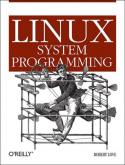 This book is about writing software that makes the most effective use
of the system you're running on -- code that interfaces directly with
the kernel and core system libraries, including the shell, text editor,
compiler, debugger, core utilities, and system daemons. The majority of
both Unix and Linux code is still written at the system level, and
Linux System Programming focuses on everything above the kernel, where
applications such as Apache, bash, cp, vim, Emacs, gcc, gdb, glibc, ls,
mv, and X exist. Written primarily for engineers looking to program
(better) at the low level, this book is an ideal teaching tool for any
programmer. Even with the trend toward high-level development, either
through web software (such as PHP) or managed code (C#), someone still
has to write the PHP interpreter and the C# virtual machine. Linux
System Programming gives you an understanding of core internals that
makes for better code, no matter where it appears in the stack.
Debugging high-level code often requires you to understand the system
calls and kernel behavior of your operating system, too. Key topics
include: An overview of Linux, the kernel, the C library, and the C
compiler Reading from and writing to files, along with other basic file
I/O operations, including how the Linux kernel implements and manages
file I/O Buffer size management, including the Standard I/O library
Advanced I/O interfaces, memory mappings, and optimization techniques
The family of system calls for basic process management Advanced
process management, including real-time processes File and
directories-creating, moving, copying, deleting, and managing them
Memory management -- interfaces for allocating memory, managingthe
memory you have, and optimizing your memory access Signals and their
role on a Unix system, plus basic and advanced signal interfaces Time,
sleeping, and clock management, starting with the basics and continuing
through POSIX clocks and high resolution timers With Linux System
Programming, you will be able to take an in-depth look at Linux from
both a theoretical and an applied perspective as you cover a wide range
of programming topics.
This book is about writing software that makes the most effective use
of the system you're running on -- code that interfaces directly with
the kernel and core system libraries, including the shell, text editor,
compiler, debugger, core utilities, and system daemons. The majority of
both Unix and Linux code is still written at the system level, and
Linux System Programming focuses on everything above the kernel, where
applications such as Apache, bash, cp, vim, Emacs, gcc, gdb, glibc, ls,
mv, and X exist. Written primarily for engineers looking to program
(better) at the low level, this book is an ideal teaching tool for any
programmer. Even with the trend toward high-level development, either
through web software (such as PHP) or managed code (C#), someone still
has to write the PHP interpreter and the C# virtual machine. Linux
System Programming gives you an understanding of core internals that
makes for better code, no matter where it appears in the stack.
Debugging high-level code often requires you to understand the system
calls and kernel behavior of your operating system, too. Key topics
include: An overview of Linux, the kernel, the C library, and the C
compiler Reading from and writing to files, along with other basic file
I/O operations, including how the Linux kernel implements and manages
file I/O Buffer size management, including the Standard I/O library
Advanced I/O interfaces, memory mappings, and optimization techniques
The family of system calls for basic process management Advanced
process management, including real-time processes File and
directories-creating, moving, copying, deleting, and managing them
Memory management -- interfaces for allocating memory, managingthe
memory you have, and optimizing your memory access Signals and their
role on a Unix system, plus basic and advanced signal interfaces Time,
sleeping, and clock management, starting with the basics and continuing
through POSIX clocks and high resolution timers With Linux System
Programming, you will be able to take an in-depth look at Linux from
both a theoretical and an applied perspective as you cover a wide range
of programming topics.
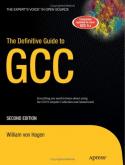
The GNU Compiler Collection (GCC) offers a variety of compilers for different programming languages including C, C++, Java, Fortran, and Ada. The Definitive Guide to GCC, Second Edition has been revised to reflect the changes made in the most recent major GCC release, version 4. Providing in-depth information on GCC's enormous array of features and options, and introducing crucial tools such as autoconf, gprof, and libtool, this book functions as both a guide and reference.
This book goes well beyond a general introduction to GCC and covers key programming techniques such as profiling and optimization that, when used in conjunction with GCCs advanced features, can greatly improve application performance. This second edition will prove to be an invaluable resource, whether youre a student seeking familiarity with this crucial tool or an expert who uses GCC on a daily basis.
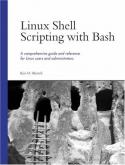 According to IDC, over 170,000 new servers were shipped in the first
quarter of 2003. That also means that there were potentially more than
170,000 people like you charged with administering these systems
without the proper knowledge or training to do so. Linux Shell Scripting with Bash
will help you learn to not only get your system up and running quickly
by employing the Bash shell, but it will also show you professional
scripting solutions through the use of structured programming and
standard Linux development tools. The book focuses on the Linux
environment, which the shell relies on to function, and the robust
Linux tool set, making this book ideal for learning shell scripting.
Real-world scripts are included that are readable, extendable and easy
to debug. This book is an asset to any Linux user.
According to IDC, over 170,000 new servers were shipped in the first
quarter of 2003. That also means that there were potentially more than
170,000 people like you charged with administering these systems
without the proper knowledge or training to do so. Linux Shell Scripting with Bash
will help you learn to not only get your system up and running quickly
by employing the Bash shell, but it will also show you professional
scripting solutions through the use of structured programming and
standard Linux development tools. The book focuses on the Linux
environment, which the shell relies on to function, and the robust
Linux tool set, making this book ideal for learning shell scripting.
Real-world scripts are included that are readable, extendable and easy
to debug. This book is an asset to any Linux user.
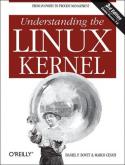 In order to thoroughly understand what makes Linux tick and why it
works so well on a wide variety of systems, you need to delve deep into
the heart of the kernel. The kernel handles all interactions between
the CPU and the external world, and determines which programs will
share processor time, in what order. It manages limited memory so well
that hundreds of processes can share the system efficiently, and
expertly organizes data transfers so that the CPU isn't kept waiting
any longer than necessary for the relatively slow disks.
In order to thoroughly understand what makes Linux tick and why it
works so well on a wide variety of systems, you need to delve deep into
the heart of the kernel. The kernel handles all interactions between
the CPU and the external world, and determines which programs will
share processor time, in what order. It manages limited memory so well
that hundreds of processes can share the system efficiently, and
expertly organizes data transfers so that the CPU isn't kept waiting
any longer than necessary for the relatively slow disks. The third edition of "Understanding the Linux Kernel" takes you on a guided tour of the most significant data structures, algorithms, and programming tricks used in the kernel. Probing beyond superficial features, the authors offer valuable insights to people who want to know how things really work inside their machine. Important Intel-specific features are discussed. Relevant segments of code are dissected line by line. But the book covers more than just the functioning of the code; it explains the theoretical underpinnings of why Linux does things the way it does.
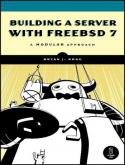 The most difficult part of building a server with FreeBSD, the
Unix-like operating system, is arguably software installation and
configuration. Finding the software is easy enough; getting everything
up and running is another thing entirely. The only option for many
people has been to hire a consultant.
The most difficult part of building a server with FreeBSD, the
Unix-like operating system, is arguably software installation and
configuration. Finding the software is easy enough; getting everything
up and running is another thing entirely. The only option for many
people has been to hire a consultant. Building a Server with FreeBSD 7 is for those of us who prefer to build our own server. If you're a small business owner looking for a reliable email server, a curious Windows administrator, or if you just want to put that old computer in the closet to work, you'll learn how to get things up and running quickly. Then, once you have a working system, you can experiment, extend, and customize as you please.
You'll learn how to install FreeBSD, then how to install popular server applications with the ports collection. Each package is treated as an independent module, so you can dip into the book at any point to install just the packages you need, when you need them. The book s modules cover topics like:
- Running common FreeBSD admin commands and tasks
- Managing the FreeBSD ports collection
- Installing third-party apps like Apache, Courier-IMAP, SpamAssassin, CUPS, Cyrus SASL, MediaWiki, and WordPress
- Setting up MySQL, NTP, ISC DHCP, ISC BIND DNS, PHP, OpenLDAP, OpenSSH, OpenSSL, and OpenVPN
Building a Server with FreeBSD 7 will have you up and running fast, with minimum hassle. (Just be sure to send the money you save to the Unemployed Consultant Foundation.)
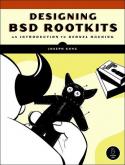 Though rootkits have a fairly negative image, they can be used for both good and evil. Designing BSD Rootkits
arms you with the knowledge you need to write offensive rootkits, to
defend against malicious ones, and to explore the FreeBSD kernel and
operating system in the process.
Though rootkits have a fairly negative image, they can be used for both good and evil. Designing BSD Rootkits
arms you with the knowledge you need to write offensive rootkits, to
defend against malicious ones, and to explore the FreeBSD kernel and
operating system in the process. Organized as a tutorial, Designing BSD Rootkits will teach you the fundamentals of programming and developing rootkits under the FreeBSD operating system. Author Joseph Kong's goal is to make you smarter, not to teach you how to write exploits or launch attacks. You'll learn how to maintain root access long after gaining access to a computer and how to hack FreeBSD.
Kongs liberal use of examples assumes no prior kernel-hacking experience but doesn't water down the information. All code is thoroughly described and analyzed, and each chapter contains at least one real-world application.
Included:
Hack the FreeBSD kernel for yourself!
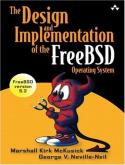 As in earlier Addison-Wesley books on the UNIX-based BSD
operating system, Kirk McKusick and George Neville-Neil deliver here
the most comprehensive, up-to-date, and authoritative technical
information on the internal structure of open source FreeBSD. Readers
involved in technical and sales support can learn the capabilities and
limitations of the system; applications developers can learn
effectively and efficiently how to interface to the system; system
administrators can learn how to maintain, tune, and configure the
system; and systems programmers can learn how to extend, enhance, and
interface to the system. The authors provide a concise overview of
FreeBSD's design and implementation. Then, while explaining key design
decisions, they detail the concepts, data structures, and algorithms
used in implementing the systems facilities. As a result, readers can
use this book as both a practical reference and an in-depth study of a
contemporary, portable, open source operating system.This book:
*Details the many performance improvements in the virtual memory system
*Describes the new symmetric multiprocessor support *Includes new
sections on threads and their scheduling *Introduces the new jail
facility to ease the hosting of multiple domains *Updates information
on networking and interprocess communication Already widely used for
Internet services and firewalls, high-availability servers, and general
timesharing systems, the lean quality of FreeBSD also suits the growing
area of embedded systems. Unlike Linux, FreeBSD does not require users
to publicize any changes they make to the source code.
As in earlier Addison-Wesley books on the UNIX-based BSD
operating system, Kirk McKusick and George Neville-Neil deliver here
the most comprehensive, up-to-date, and authoritative technical
information on the internal structure of open source FreeBSD. Readers
involved in technical and sales support can learn the capabilities and
limitations of the system; applications developers can learn
effectively and efficiently how to interface to the system; system
administrators can learn how to maintain, tune, and configure the
system; and systems programmers can learn how to extend, enhance, and
interface to the system. The authors provide a concise overview of
FreeBSD's design and implementation. Then, while explaining key design
decisions, they detail the concepts, data structures, and algorithms
used in implementing the systems facilities. As a result, readers can
use this book as both a practical reference and an in-depth study of a
contemporary, portable, open source operating system.This book:
*Details the many performance improvements in the virtual memory system
*Describes the new symmetric multiprocessor support *Includes new
sections on threads and their scheduling *Introduces the new jail
facility to ease the hosting of multiple domains *Updates information
on networking and interprocess communication Already widely used for
Internet services and firewalls, high-availability servers, and general
timesharing systems, the lean quality of FreeBSD also suits the growing
area of embedded systems. Unlike Linux, FreeBSD does not require users
to publicize any changes they make to the source code.
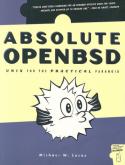 This straightforward, practical, and complete guide to mastering the
powerful and complex OpenBSD operating system, is for the experienced
UNIX user who wants to add OpenBSD to his or her repertoire. The author
assumes a knowledge of basic UNIX commands, design, and permissions.
The book takes you through the intricacies of the platform and teaches
how to manage your system, offering friendly explanations, background
information, troubleshooting suggestions, and copious examples
throughout.
This straightforward, practical, and complete guide to mastering the
powerful and complex OpenBSD operating system, is for the experienced
UNIX user who wants to add OpenBSD to his or her repertoire. The author
assumes a knowledge of basic UNIX commands, design, and permissions.
The book takes you through the intricacies of the platform and teaches
how to manage your system, offering friendly explanations, background
information, troubleshooting suggestions, and copious examples
throughout.
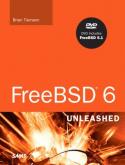
FreeBSD is extremely robust and powers some of the largest internet sites in world including Yahoo!. FreeBSD 6 Unleashed provides complete coverage of everything you need to know to use FreeBSD to its full potential, including coverage of FreeBSD 6.0. This edition includes updated coverage of Apache, MySQL and Sendmail, as well as added coverage of PowerPC support for Macintosh G3 and G4 platforms. This is the most up to date, comprehensive reference on the market covering FreeBSD 6.0.
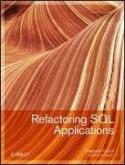 What can you do when database performance doesn't meet expectations?
Before you turn to expensive hardware upgrades to solve the problem,
reach for this book. Refactoring SQL Applications provides a
set of tested options for making code modifications to dramatically
improve the way your database applications function. Backed by
real-world examples, you'll find quick fixes for simple problems,
in-depth answers for more complex situations, and complete solutions
for applications with extensive problems. Learn to:
What can you do when database performance doesn't meet expectations?
Before you turn to expensive hardware upgrades to solve the problem,
reach for this book. Refactoring SQL Applications provides a
set of tested options for making code modifications to dramatically
improve the way your database applications function. Backed by
real-world examples, you'll find quick fixes for simple problems,
in-depth answers for more complex situations, and complete solutions
for applications with extensive problems. Learn to:- Determine if and where you can expect performance gains
- Apply quick fixes, such as limiting calls to the database in stored functions and procedures
- Refactor tasks, such as replacing application code by a stored procedure, or replacing iterative, procedural statements with sweeping SQL statements
- Refactor flow by increasing parallelism and switching business-inducted processing from synchronous to asynchronous
- Refactor design using schema extensions, regular views, materialized views, partitioning, and more
- Compare before and after versions of a program to ensure you get the same results once you make modifications
